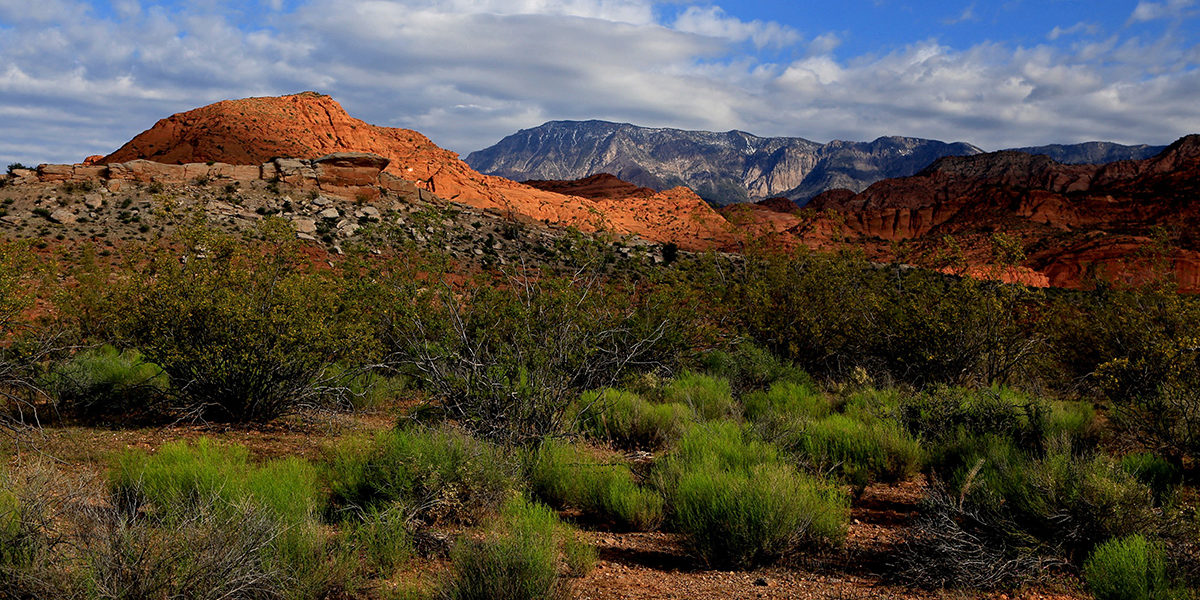
A few months ago I was attending an informal potluck lunch meeting in the office of Kathy Cieslewicz, the mother of visual arts here in Washington County. Not only is Kathy full of great ideas, she loves making connections among people in the arts. And that day I met Djibril N’Doye, a Senegalese artist who now lives here in Southern Utah.

Djibril passed out fliers that featured a number of his pieces and I was immediately drawn in. So often we see the same types of art here in Southern Utah. While I love red rocks as much as anyone, I deeply appreciate diversity in subject matter, style and media. Djibril’s art delivers on all three accounts. After seeing the fliers, I knew I had to see Djibril’s art in person.

He grew up in a community based on farming, fishing and raising cattle, which became his “school of life,” according to the biography on his Facebook page at facebook.com/djibrilndoyeartist/. During his formative years as an artist, he had a difficult time finding standard art supplies. Even now his tools are simple, “yet unforgiving.”

Some of his pieces are created with only pen and ink, in black and white or color, on paper. My favorite pieces are done with a woodburner on wood, occasionally with additional hues from colored pencils. Apparently using woodburners — or other heated tools — to create art is called pyrography.
In the biography on his website at DjibrilNDoye.com, it says his style of drawing is inspired by sculptures in ebony. Many of his pieces portray common scenes from daily life in West Africa. Djibril came to the United States in 1995 and lived in California before moving to Southern Utah.

Djibril is also a drummer and many of his pieces portray musicians playing traditional African instruments. One of my favorite pieces at his current show at the DiFiore Center in St. George featured a musician playing the balafon, a percussion instrument (above). I personally loved how Djibril illustrated the musician’s movements, instilling this piece and others with such life.

But my favorite piece was “Blanketed Woman” (“La femme en couverture”), shown above. It’s a tribute to his mother, who farmed, mined salt, sold the salt door-to-door and sold mangoes along the roadside and at the railway station. There are elements of cubism and surrealism in the piece. I was captivated by its composition, the elegance of the lines, and its tones.
Other pieces in the show illustrated the practice of salt-mining, which has been part of Djibril’s family life for many generations. While I enjoy the artistic beauty of his work, it’s also fascinating to learn more about Senegalese culture. The exhibit will remain on display at the DiFiore Center, one of my favorite places in St. George, at 307 N. Main St., through the end of November. The center is open from 10 a.m.-4:30 p.m. on Mondays and from 10 a.m.-6 p.m. Tuesday through Saturday. Admission is free. Visit DiFioreCenter.org or call 435-673-4206 for information.

And, if you’re a visual arts lover, get ready for a big announcement from Dixie State University in the coming weeks. It’s related to the mystery crate currently located in the Sears Art Museum Gallery, where the brilliant “Mapping: The Poetics of Utah Expression” is on display through Dec. 8, as well as my own photography show, “Connecting Paths,” in the Eccles Grand Foyer outside the gallery. Both spaces are located in the Eccles Center for the Arts at Dixie State University.
